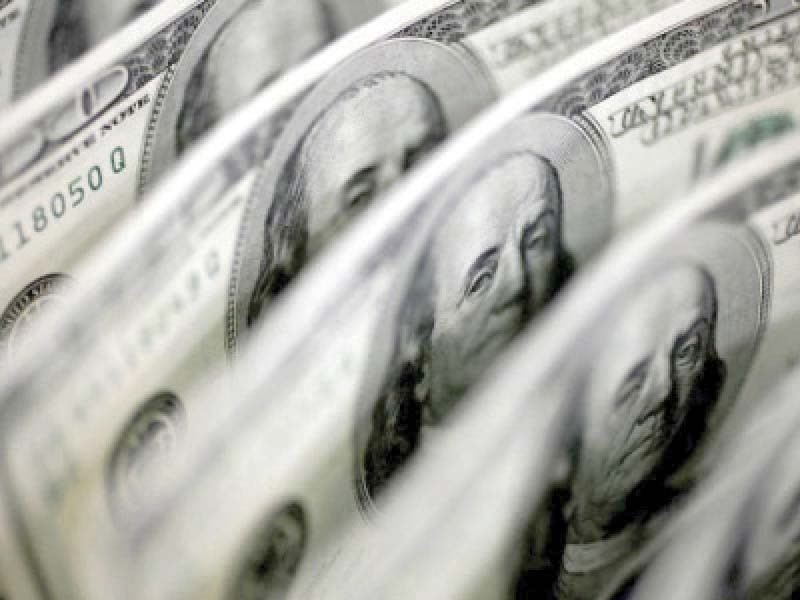
Pakistan has disregarded the International Monetary Fund (IMF)’s assumption of 16% depreciation of the currency in the next fiscal year and decided to prepare the new budget at an exchange rate of Rs295 to a dollar.
The Ministry of Finance has issued an office memorandum, determining the average value of the local currency at Rs295 to a dollar for the fiscal year 2024-25 budget, according to sources. It has assumed a 3.5% or Rs10 per dollar depreciation compared to the IMF’s assumption of nearly a 16% fall in the value of the local currency.
The Rs295 to a dollar is not a target rate and instead will be used for calculating the cost of foreign debt repayments, services, and goods that the government would import and pay from the budget, including defence-related procurements. The Rs295 to a dollar is also the average price, suggesting that the year-end rate in June 2025 might be higher.
However, in its report released in May, the IMF assumed the value of the rupee at Rs328.4 to a dollar, showing a depreciation of nearly 16% over this year’s average price of Rs285 per dollar.
In the past, the IMF assumptions about the exchange rate have proven incorrect. For this June, the IMF had assessed the rupee-dollar parity at Rs300, which went off by 5%.
The Ministry of Planning also stated on Friday that the exchange rate and foreign exchange reserves would remain under pressure in the next fiscal year due to scheduled external debt repayments.
The government’s realistic foreign loan disbursements by multilateral and bilateral creditors range around $6 billion for the next fiscal year, excluding any borrowings from the IMF, through sovereign bonds, and foreign commercial loans.
The government is pinning high hopes on the World Bank for disbursement of around $2.5 billion and another $1.6 to $1.8 billion by the Asian Development Bank. It hopes that these disbursements along with the possibility of a new deal with the IMF could keep the pressure off the rupee in the next fiscal year too.
The government’s notified rate is crucial for determining the defence budget, foreign debt servicing, the cost of running Pakistan’s missions abroad, and the Public Sector Development Programme (PSDP). For the next fiscal year, the government has estimated about $1.7 billion inflows for federal project financing.
Any fluctuations in the dollar value or underestimation at the time of budgeting can render the entire budget unrealistic, leading to cost overruns and the need for supplementary grants.
For the outgoing fiscal year, the government had set the rupee-dollar parity at Rs290 to a dollar for budget purposes. However, the average rupee-dollar parity for the fiscal year 2023-24 ended up being Rs285.
On Friday, the interbank rate for the rupee stood at around Rs279.
The IMF staff level report noted that a flexible exchange rate was necessary to buffer shocks and rebuild reserves, and monetary policy should remain tight to bring inflation to more moderate levels and agile to respond proactively if signs of inflation re-emerge.
The IMF’s assumption about the exchange rate could mean that the inflation would not fall to single digits in the next fiscal year.
Pakistan is currently facing a severe shortage of foreign currency and is seeking another IMF programme. The IMF has linked the signing of the new staff-level agreement for the next programme with the approval of Pakistan’s new budget in line with the Fund’s desire and the prior approval of the IMF executive board for the staff level deal.
Based on the indicative rupee-dollar parity, the sources said that interest payments on external debt are projected to reach around Rs1.1 trillion for the next fiscal year.
The IMF has projected next fiscal year’s total interest payments on the debt at a record Rs9.8 trillion—far higher than the finance ministry’s estimates of around Rs9 trillion. The IMF sees interest on domestic debt in the range of Rs8.5 trillion and Rs1.15 trillion on external debt.
The rupee-dollar parity also carries implications for the defence budget. The Ministry of Defence has requested a budget of Rs2.27 trillion, while the finance ministry has indicated Rs2.1 trillion thus far. The exchange value will impact the defence budget allocation to the extent of the Armed Forces Development Programme.
Finance Minister Mohammad Aurangzeb plans to unveil the new budget on June 10th but the date remains uncertain due to the prime minister’s visit to China and an unexpected delay in holding the National Economic Council (NEC) meeting. The Cabinet Division has not yet constituted the NEC, and as a result, its meeting may now be held on the return of the premier from Beijing.
Before the announcement of the budget, the government will have to convene the NEC meeting to approve national development outlays for the federal and provincial governments and to launch the Economic Survey of Pakistan. If Pakistan meets the IMF condition on the agreed fiscal framework including the taxation measures, a staff-level agreement with the IMF can be reached in July. A timely IMF deal will keep the pressure away from the local currency.
Published in The Express Tribune, June 2nd, 2024.
Like Business on Facebook, follow @TribuneBiz on Twitter to stay informed and join in the conversation.










1731884290-0/image-(9)1731884290-0-270x192.webp)










COMMENTS (1)
Comments are moderated and generally will be posted if they are on-topic and not abusive.
For more information, please see our Comments FAQ